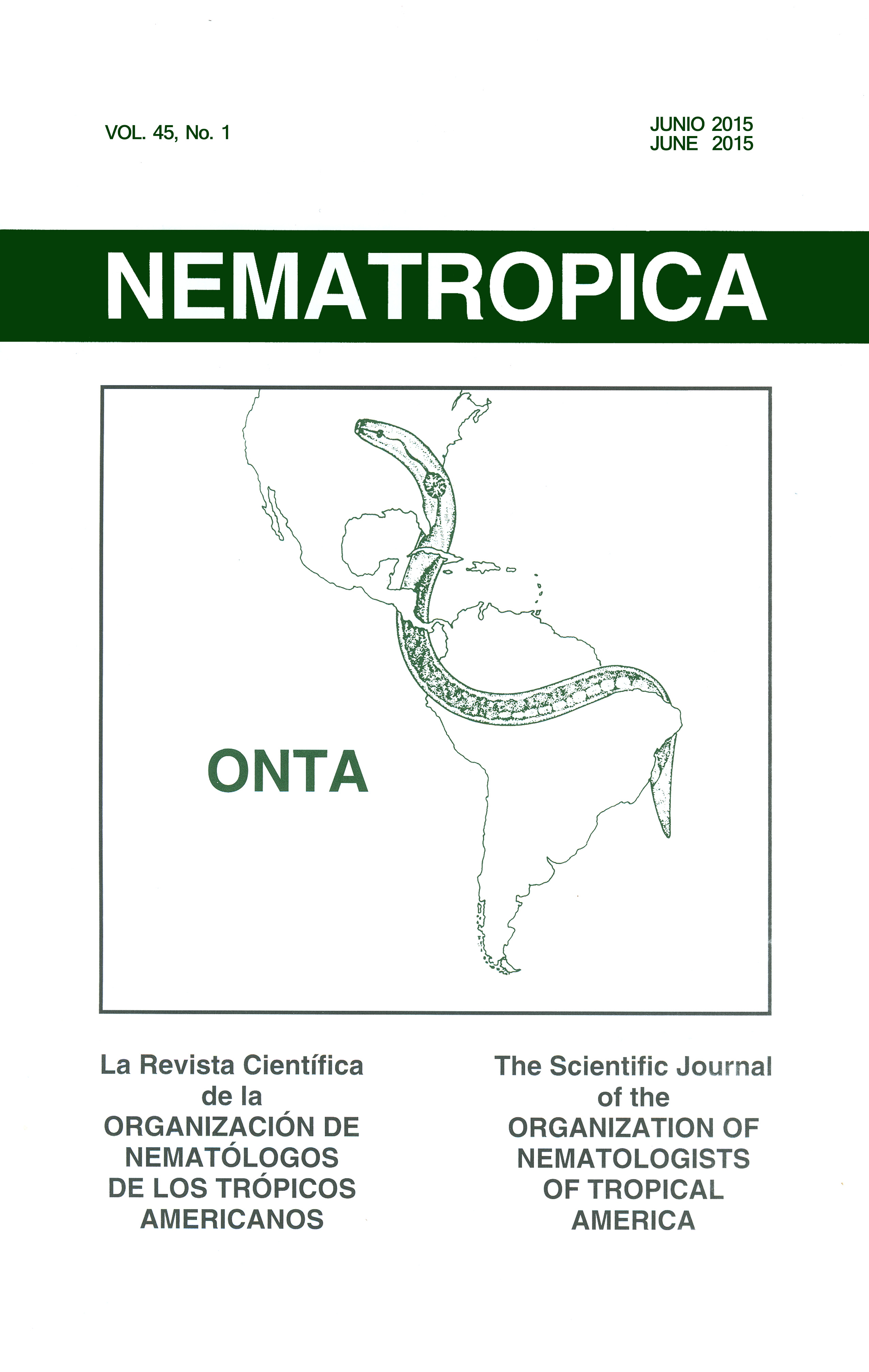IDENTIFICATION OF THE PEACH ROOT-KNOT NEMATODE, MELOIDOGYNE FLORIDENSIS,USING mtDNA PCR-RFLP
Keywords:
identification, Meloidogyne arenaria, Meloidogyne floridensis, mtDNA, PCR, mtDNA-RFLPAbstract
The peach root-knot nematode, Meloidogyne floridensis, is an emerging pathogen of peach (Prunus persica) and other crops currently known only to occur in Florida, USA. Molecular and morphological analyses are commonly used to differentiate M. floridensisfrom other root-knot nematodes species found in Florida, but it may be difficult to distinguish M. floridensisfrom M. arenaria without DNA sequencing because of the similarity of the DNA fragment size obtained with the commonly used DNA primer sets. An economical, reliable, and rapid method has been routinely used in our laboratory and allows these two nematode species to be differentiated without sequencing using polymerase chain reaction-restriction fragment length polymorphism (PCR-RFLP). The mitochondrial (mtDNA) region between COII and 16S was amplified using the C2F3/1108 primer set and digested with HinfI and SspI. Digestion of the PCR product with HinfI yielded two unique fragments of approximately 770 bp and 370 bp for M. floridensis, which consistently allows for a fast and easy distinction between the two nematode species regardless of whether the sample is comprised of female or juvenile.

